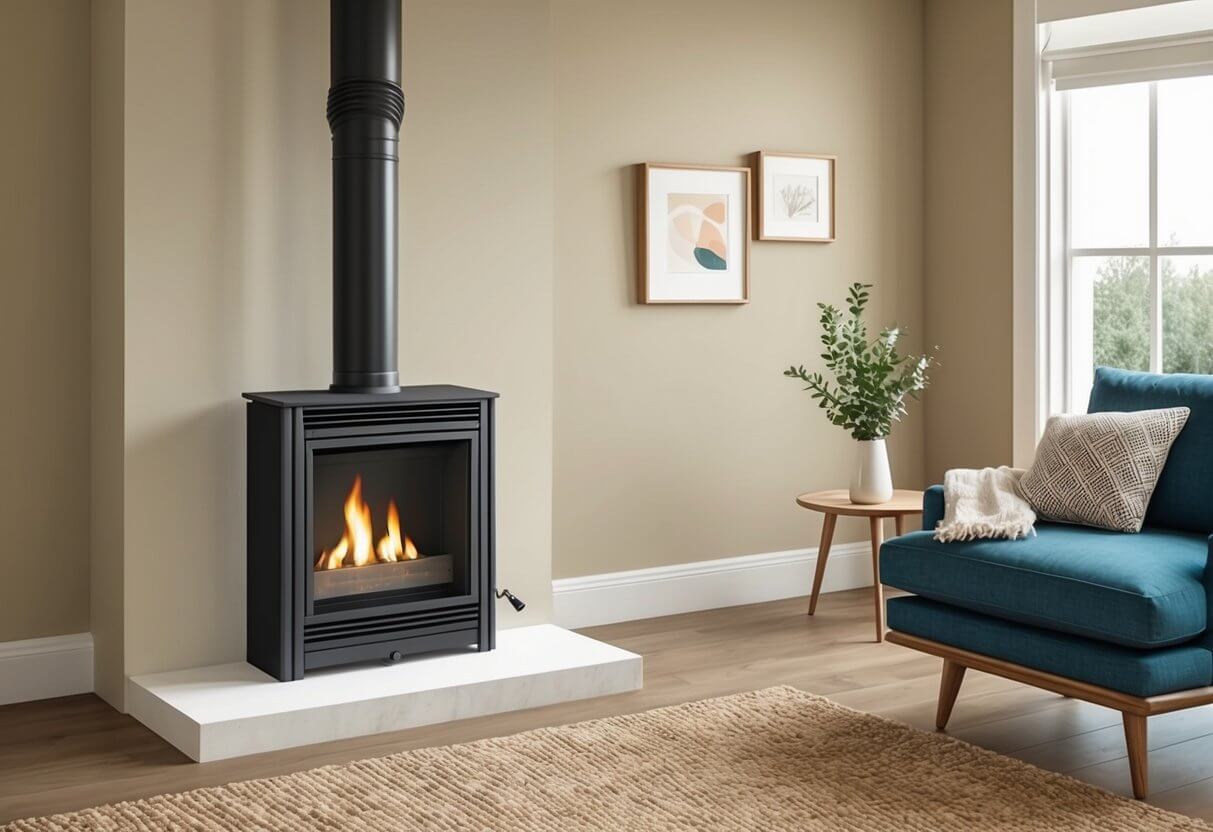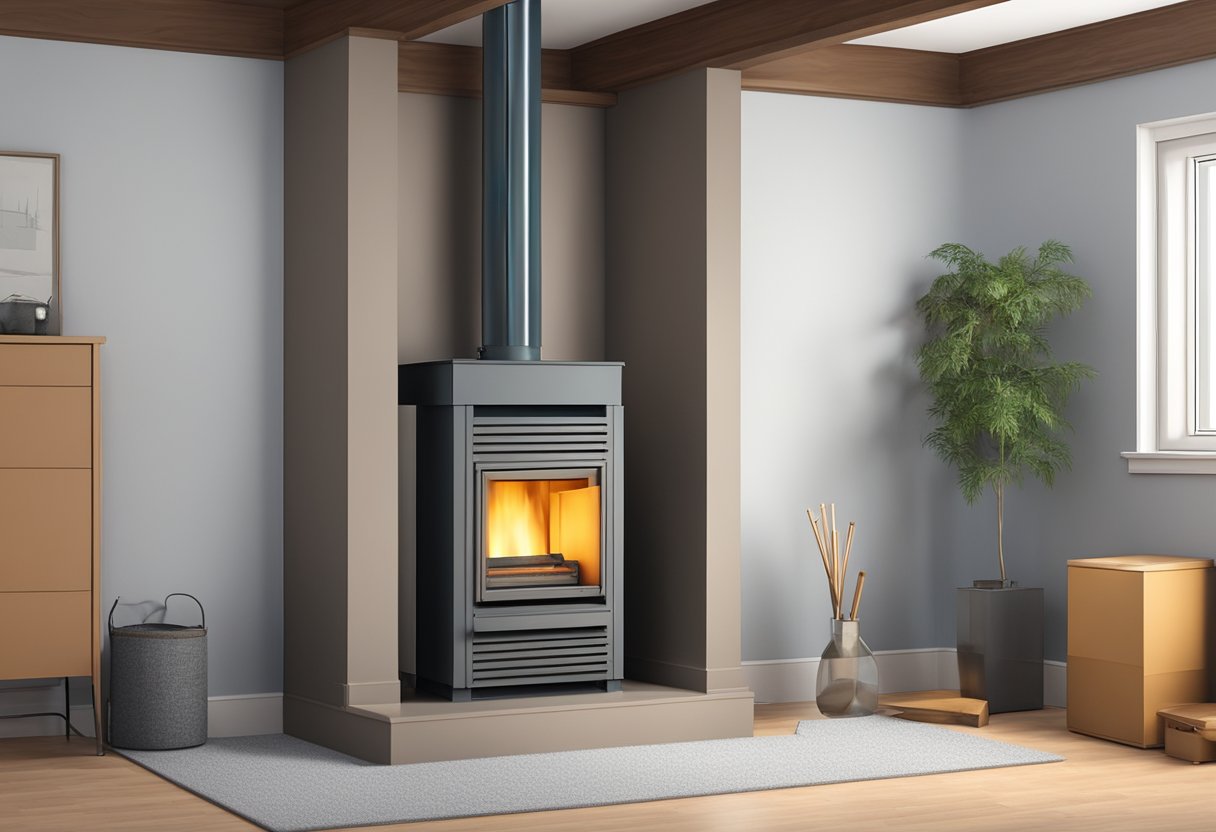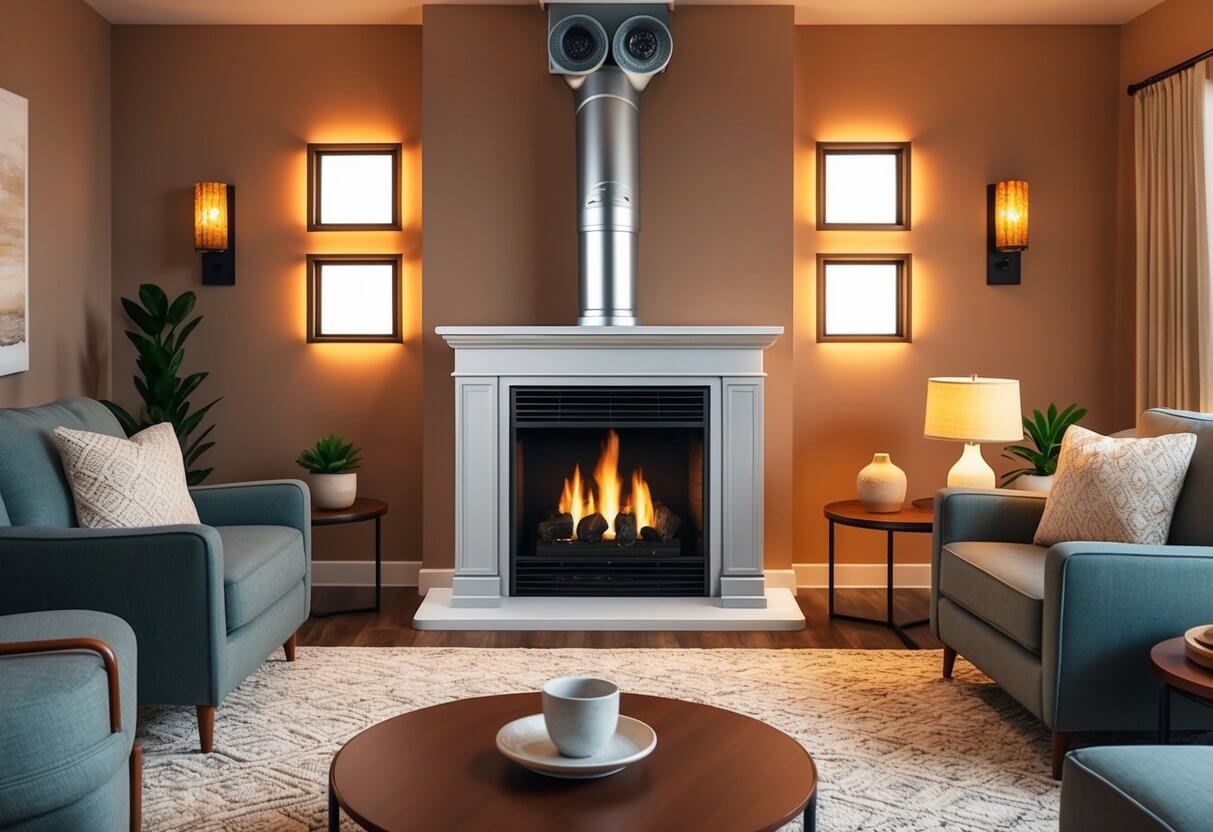Does Gas Fireplace Need a Flue: Understanding Ventilation Requirements

Introduction
In general, gas fireplaces can be categorized into vented and ventless options, impacting flue requirements significantly. Vented gas fireplaces typically require a flue to channel combustion byproducts outside, while ventless fireplaces operate without one, relying on advanced technology for safe air quality. Recognizing these differences helps us make informed decisions about our installation options.
As we explore the various aspects of gas fireplaces and their ventilation needs, it’s essential to evaluate our specific circumstances. From safety concerns stemming from combustion gases to the potential benefits of enhanced energy efficiency, understanding how a flue functions in our gas fireplace setup is vital.
Key Takeaways
- The need for a flue depends on whether the gas fireplace is vented or ventless.
- Proper ventilation is crucial for maintaining indoor air quality and safety.
- Understanding installation requirements ensures efficient and safe operation of gas fireplaces.
Understanding Gas Fireplaces and Flues
In exploring gas fireplaces, it is essential to understand their design, the types available, and the function of flues. Each aspect plays a significant role in the safe and efficient operation of these heating appliances.
Fundamentals of Gas Fireplace Design
Gas fireplaces are designed to produce heat using natural gas or propane. Unlike wood-burning models, they create a cleaner burn with fewer emissions.
Key components include the firebox, burner, and ignition system. The firebox houses the flame, while the burner distributes gas evenly to ensure proper combustion.
Proper airflow is critical for efficiency. This is achieved through various venting options, which influence the necessity and type of flue required.
Types of Gas Fireplaces
There are several types of gas fireplaces, each with unique venting requirements:
- Vented Gas Fireplaces: These require a flue to expel combustion gases outside. They can be further categorized into:
- B-Vent Fireplaces: Use a vertical chimney for venting.
- Direct Vent Fireplaces: These have a dedicated vent to bring in air from outside and exhaust gases directly.
- Vent-Free Gas Fireplaces: These do not require a flue. They burn gas efficiently, releasing minimal emissions into the space. While convenient, they may not be suitable for all homes due to concerns about indoor air quality.
The Role of a Flue in Gas Fireplaces
A flue is essential for vented gas fireplaces, serving to expel byproducts such as carbon monoxide and water vapor safely outdoors.
For direct vent models, the flue allows outside air for combustion while also venting waste products. This dual purpose enhances safety and efficiency.
Conversely, vent-free gas fireplaces rely on their design to burn gas cleanly without a flue. While this option can be appealing for those seeking simplicity, it limits ventilation and may pose risks in poorly ventilated areas.
Understanding the role of flues helps us make informed decisions regarding gas fireplace installation and operation, ensuring safety and compliance with local regulations.
Ventilation and Air Quality Concerns
Ensuring proper ventilation is crucial for maintaining air quality when using gas fireplaces. Poorly vented systems can lead to serious health risks due to the accumulation of harmful gases. We will explore the importance of ventilation and the potential health risks associated with inadequate air quality.
Importance of Ventilation
Ventilation plays a critical role in the functionality of gas fireplaces. It allows the byproducts of combustion, such as carbon monoxide and water vapor, to exit safely into the outdoors. For vented systems, the chimney or flue serves as the channel for these gases.
- Direct Vent Fireplaces: These systems draw air from outside for combustion and expel exhaust directly outside, enhancing safety.
- Vented Fireplaces: They rely on a chimney or flue to remove harmful gases and maintain air circulation.
We should regularly check that the flue is unobstructed to prevent buildup of toxic gases in our homes.
Air Quality and Health Risks
Poor indoor air quality from gas fireplaces can lead to several health concerns. When combustion gases are not properly vented, they can accumulate indoors, increasing the risk of carbon monoxide poisoning. Common symptoms of exposure include headaches, dizziness, and nausea.
To mitigate these risks, a carbon monoxide detector is essential. It alerts us to dangerous levels of this colorless, odorless gas. We must also be cautious of water vapor, which can contribute to indoor humidity and mold growth.
Maintaining proper ventilation and monitoring air quality helps protect our health while enjoying the warmth of gas fireplaces.
Venting Options for Gas Fireplaces
When considering gas fireplaces, understanding the various venting options is essential for safety and efficiency. We can choose between vented and ventless systems, each with distinct characteristics and requirements.
Vented Gas Fireplace Considerations
Vented gas fireplaces require a flue to expel combustion byproducts outdoors. There are two main types of vented systems: Natural Vent (B-Vent) and Direct Vent.
Natural Vent (B-Vent) systems utilize existing chimneys to release gases. They gain air for combustion from the interior of the home. While generally less efficient, they can be suitable for certain installations. These systems may result in heat loss due to the open flue, reducing overall heating effectiveness.
In contrast, Direct Vent systems draw air from outside and expel exhaust through a sealed flue. This type maximizes efficiency by preventing heat loss, as it keeps the home’s air separate from the combustion process. Direct vent units can vent either horizontally through an exterior wall or vertically through the roof, providing flexibility in installation.
Ventless Fireplace Technologies
Ventless fireplaces operate without a conventional flue, utilizing a different mechanism for combustion and ventilation. These systems rely on external ventilation techniques to dissolve byproducts into the air.
While ventless fireplaces claim higher efficiency and easier installation, they can pose safety concerns. They emit combustion byproducts, such as water vapor and carbon dioxide, directly into the living space. To address safety risks, manufacturers typically equip these models with oxygen depletion sensors.
We must closely monitor air quality and ensure proper maintenance if we choose a ventless system. Additionally, local building codes may restrict their installation in certain areas, so awareness of regulations is crucial.
Installation and Maintenance Requirements
When considering a gas fireplace, we must understand the critical aspects of installation and maintenance. Both play a vital role in ensuring safety and efficiency in operation.
Professional Gas Fireplace Installation
We recommend hiring a qualified professional for gas fireplace installation to comply with local building codes. Proper installation ensures that the fireplace functions efficiently and safely.
The installer should connect the gas supply securely, ensuring there are no leaks. Additionally, the ignition system and controls must be calibrated correctly to guarantee a reliable pilot flame.
Include all necessary components, such as the flue or venting system, based on the fireplace type. Adhering to manufacturer instructions during installation is essential for optimal performance and compliance with safety standards.
Routine Maintenance and Inspections
Routine maintenance is crucial for keeping our gas fireplace in top condition. We should perform regular inspections to check the gas supply lines and ignition system.
A good practice is to test the pilot flame and examine the thermocouple and thermopile for proper functioning. If we notice any irregularities, such as flickering flames or unusual smells, it’s important to address them immediately.
Cleaning the interior of the fireplace and checking the venting system should also be part of our maintenance routine. Regular maintenance not only extends the lifespan of our fireplace but also ensures that it operates safely and efficiently.
Evaluating Fireplace Efficiency and Energy Use
When considering the efficiency and energy use of fireplaces, we must analyze the various types available and their specific advantages. This allows us to make informed choices that align with our heating needs and preferences.
Comparing Fireplace Types
Gas fireplaces can be categorized primarily into vented and ventless types. Vented gas fireplaces typically require a flue for exhaust, allowing them to safely eliminate harmful byproducts like carbon monoxide. This design, while effective, can result in inefficiencies as much of the heat generated is vented outside.
On the other hand, ventless (or vent-free) gas fireplaces operate without the need for a chimney. They can achieve efficiency ratings between 80% and 90%, as they retain more of the generated heat indoors. However, they do produce waste air, which raises concerns about indoor air quality. Alternatives like wood-burning fireplaces and ethanol fireplaces offer different benefits, including aesthetics and ambiance, but usually fall short in heating efficiency compared to gas options.
Advantages of Energy Efficient Designs
Opting for energy-efficient fireplace designs can significantly reduce our energy bills while enhancing comfort. Gas fireplace inserts, for example, can improve heat output while offering advanced features like thermostatic control. These inserts often promote better combustion and lower emissions.
When assessing efficiency, factors like heating output and energy use become crucial. Many modern gas models feature innovative technologies that optimize performance. Propane fireplaces can also be efficient, especially when paired with a properly sized propane tank to meet our needs.
In addition, choosing options with higher efficiency ratings helps us minimize waste and improve our overall indoor heating experience. Technologies in electric fireplaces and newer gas systems further refine energy use, making it essential to evaluate not only the type but also the specific models we consider for our homes.
Frequently Asked Questions
In this section, we will address common inquiries related to gas fireplaces and their flue requirements. Understanding these aspects helps ensure safety, efficiency, and proper maintenance.
How can I determine if my gas fireplace flue is open?
To check if the flue is open, we can look for a lever or handle near the fireplace. Typically, this is connected to the damper. Additionally, we can observe whether smoke or fumes are venting properly during operation.
What are the venting requirements for gas fireplaces?
Venting requirements vary depending on whether we have a vented or ventless gas fireplace. Vented fireplaces generally need a flue for exhaust, while ventless models rely on the surrounding air for combustion and have no specific venting required.
Is it necessary to have a chimney sweep for gas fireplace maintenance?
Regular maintenance for gas fireplaces is important, though the necessity of a chimney sweep depends on usage. For vented models, periodic inspections by a professional help ensure that the flue is clear and functioning properly.
Can a gas fireplace operate safely without a flue?
A gas fireplace can operate safely without a traditional flue if it is specifically designed as ventless. However, we must ensure that sufficient ventilation is present to avoid the accumulation of harmful gases indoors.
What does ‘flueless’ mean in relation to gas fireplaces?
‘Flueless’ refers to gas fireplaces that do not require a flue or chimney for operation. These systems utilize oxygen from the room and are engineered to burn gas so completely that emissions are minimal, relying on catalytic converters to ensure safety.
Are Class A flues mandatory for gas fireplaces?
Class A flues are not always mandatory for gas fireplaces but are required for specific vented systems, especially those that produce higher temperatures. We must check local building codes and regulations to determine the requirements applicable to our fireplace installation.

 We Ship Anywhere USA & Canada
We Ship Anywhere USA & Canada






